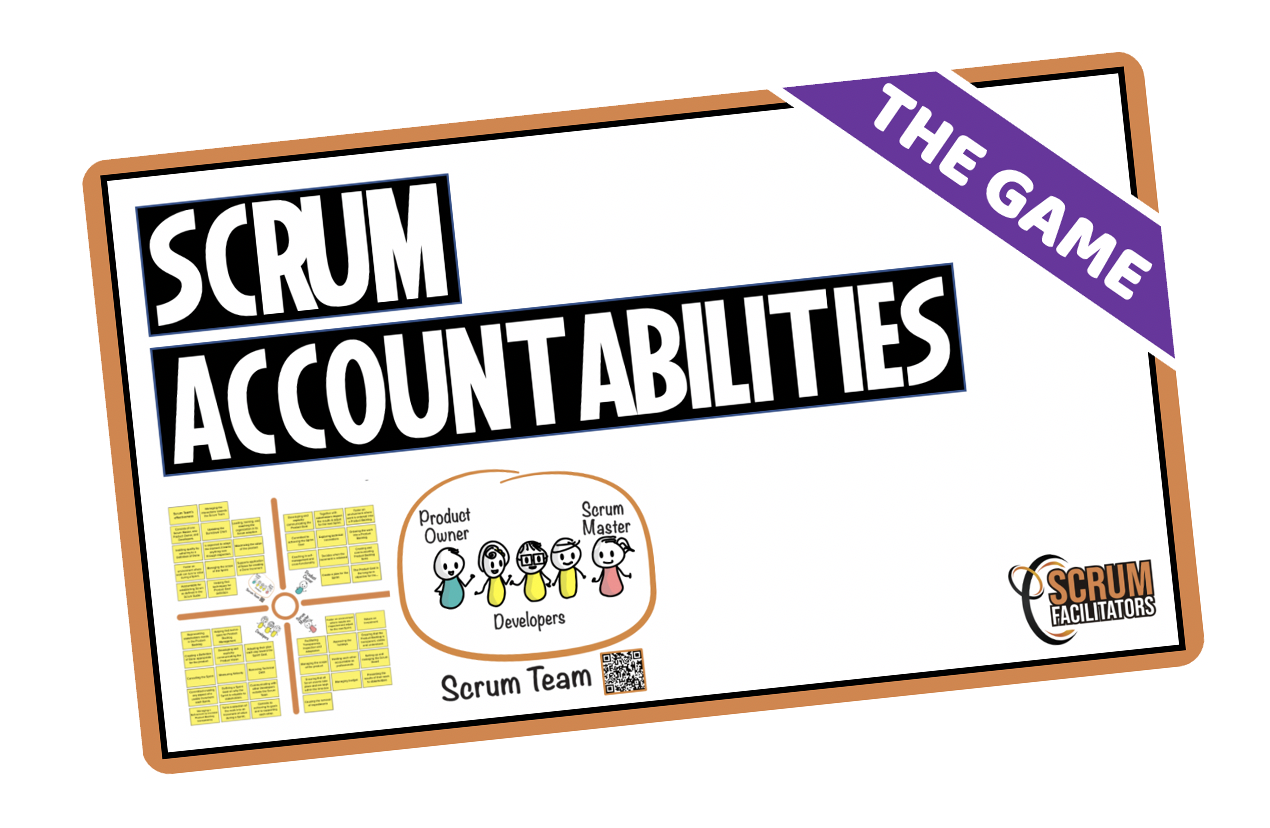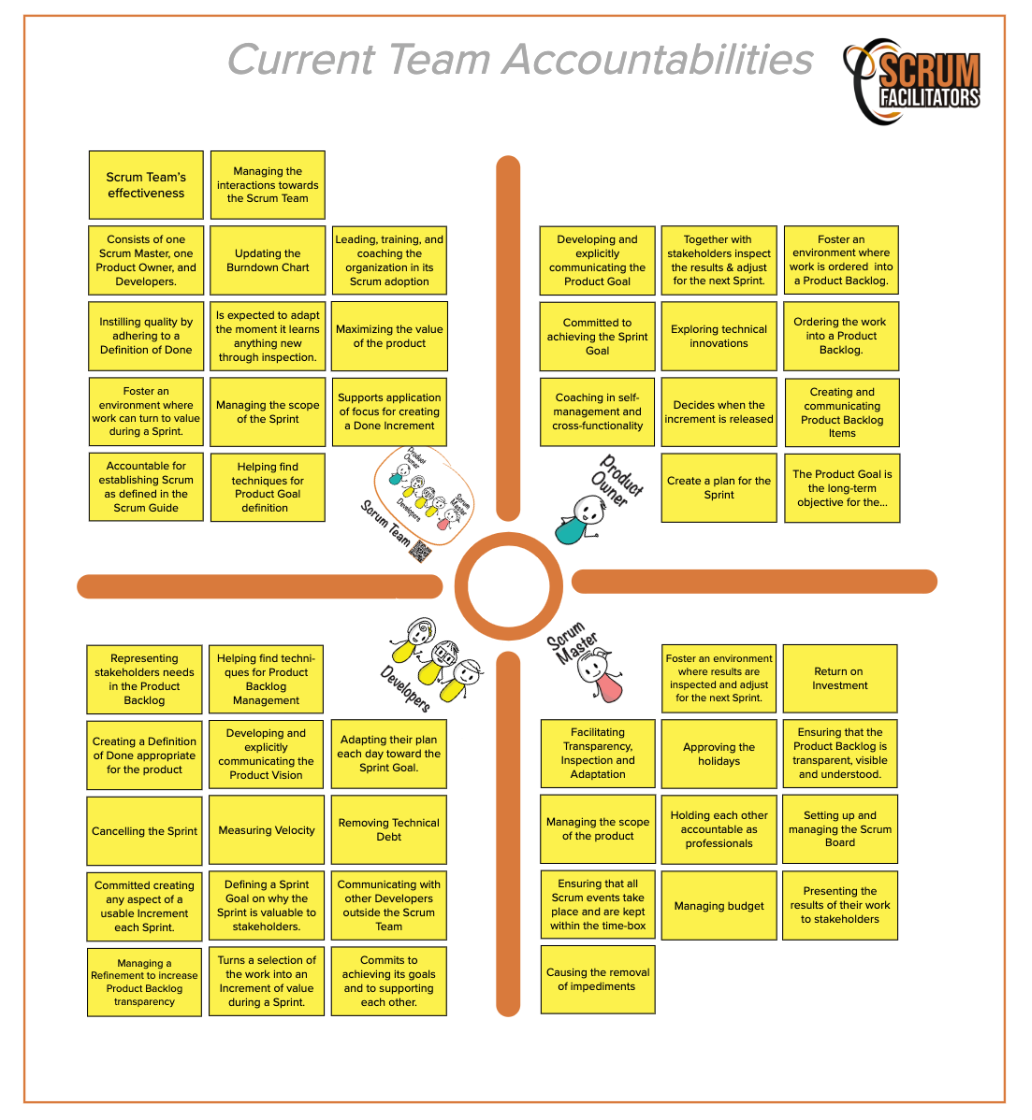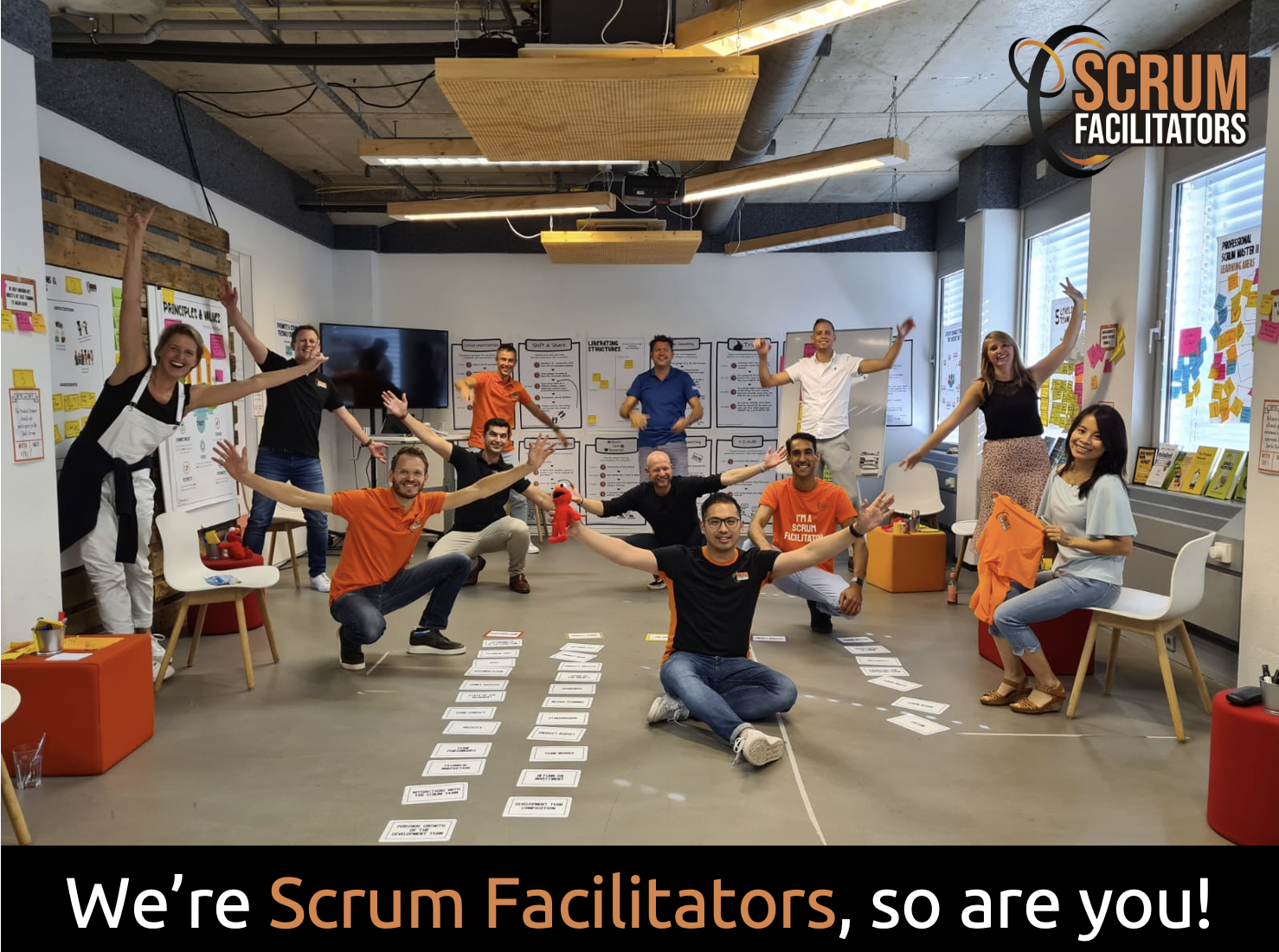
Recently the new Scrum Guide came out, and one of the updates is the switch from Development Team to Developers. This change is done to emphasize that within a Scrum Team, there are no sub-teams or hierarchies. It is a cohesive unit, one (Scrum) team of professionals who are focused on one objective at a time, the Product Goal.
Because of this change, some activities have shifted among the roles, and we’ve received many questions about accountabilities and responsibilities. This has led to the creation of the Scrum Accountability Game, which we will be using in our Scrum.org Professional Scrum classes.
At Scrum Facilitators, we believe that merely providing answered does not empower you to improve your impact on organizational agility. One of the characteristics of our training is that we like to do them in “workshop-style”. So instead of PowerPoint slides, where the trainer is mainly talking, we’ve chosen for a more interactive and fun approach where students learn more playfully. We facilitate the thinking process and help the students think about the reasons behind the answers. These questions on accountabilities in Scrum have challenged us to rethink about a workshop which enables you to discuss and understand the accountabilities more.
In this blog, we want to share with you how to play the 'Scrum Accountability Game' in a virtual setting and I'll also be sharing our Mural template that you can use.
Note: This doesn’t mean you can’t play this game during an in-person workshop/class

SCRUM ACCOUNTABILITIES GAME:
This game can be played with a minimum of 2 people up to 24. The more people you have in this workshop, the more you need to use break-out rooms and collect the information so that all participants can join the learning experience. On average it takes 30 to 60 minutes to play this game. This depends on the size of the group and the depth of the discussions.
HOW TO START:
As a Scrum Facilitator, you invite everybody and tell a story about Scrum accountabilities.
“Your team has been working with Scrum for a few years. Throughout the years, new team members have joined, and some have left the team. To still get things going, the accountabilities have shifted with as well. Although it was all for the good when you as a team decided to shift the accountabilities, unfortunately, you do not remember why. You have decided to make the activities and the current accountabilities transparent.”
Pro Tip: it is good to mention that this is fictional team accountability and does not represent your current team.


STEPS TO FOLLOW:
- Investigate the current situation as displayed in Current Team Accountabilities. If you have a small team, you can start to investigate per quadrant starting with the Scrum Team. If you are with a group of eight or more, try to create four sub-teams. Each group explores one quadrant. E.g., Scrum Team, PO, SM, or Developers

- Move items to the proper accountabilities on the Scrum Accountabilities.
- Allow each participant to go through the new overview and change the colour of an item which she/he thinks is not at the correct accountability or wants to know more about it. This step requires courage to open up and highlight items which are not clear. Be mindful about this and encourage people to do this to maximize the group learning experience.
- Discuss the items which are not clear for everybody and have a discussion about that item and the responding accountability. As a Scrum Facilitator, you can investigate the Scrum Guide 2020 before the workshop starts.

CLOSING:
We at Scrum Facilitators are on a mission to inspire Scrum Facilitators so that they can improve their impact on organizational Agility.
We do this by:
- Setting up Foundation so that we can support people who can use a little help to make the next steps. People who lost their jobs and need a push in the back to find a new job for example.
- Organizing (virtual) meetups, workshops and helping out by speaking at large Agile conferences all over the world.
- Providing all the Scrum.org accredited courses currently available on the market.
- And last by definitely not least, creating free content and materials which can be downloaded from our product page.
You can download a template for this game on Mural via our website. This game will be available soon on our partners' webshop. All the profit goes directly to our Scrum Facilitators Foundation.

